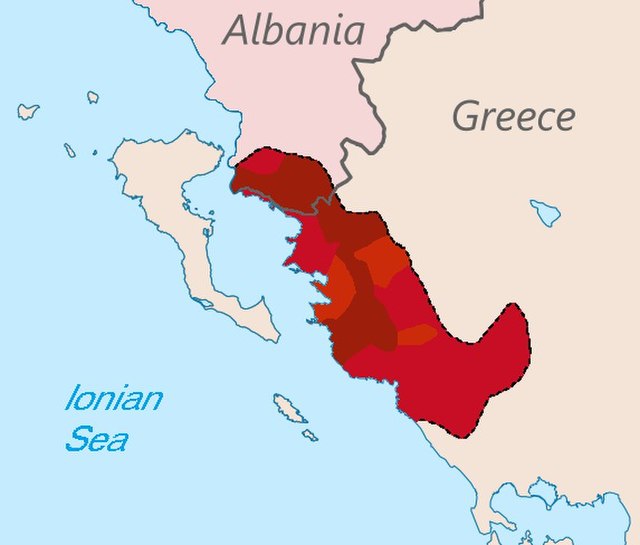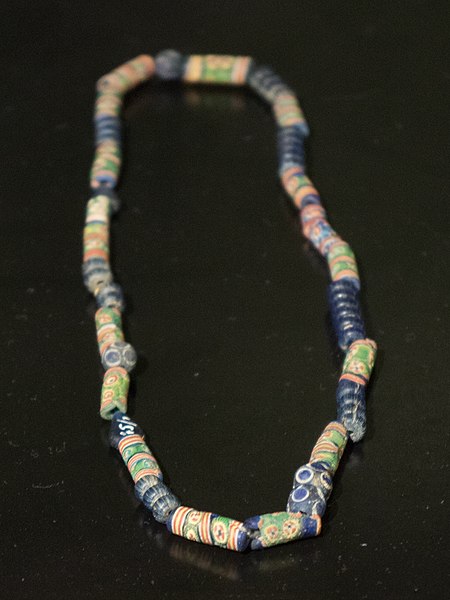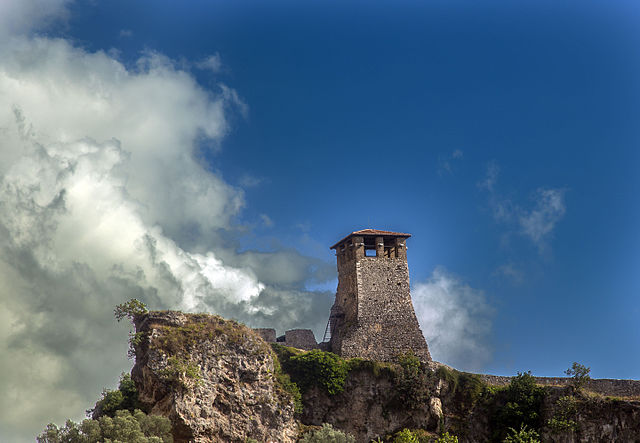Cham Albanians or Chams, are a sub-group of Albanians who originally resided in the western part of the region of Epirus in southwestern Albania and northwestern Greece, an area known among Albanians as Chameria. The Chams have their own particular cultural identity within Albanian sub-groups. A number of Chams contributed to the Albanian national identity and played an important role in starting the renaissance of the Albanian culture in the 19th century. The Chams speak their own dialect of the Albanian language, the Cham Albanian dialect, which is a Southern Tosk Albanian dialect and one of the two most conservative ones; the other being Arvanitika.

Maximum extent of Cham Albanian dialect: 19th century till 1912/1913 (Hatched line), according to Kokolakis.M. Population (irrespective of linguistic background) shown by religion: Muslim majority (Brown), Orthodox majority (Pink), Mixed (Light Brown). Colored areas do not imply that Albanian-speakers formed the majority of the population.
Chams in Filiates in 1915, by Fred Boissonas
Theodoros Pangalos
During Enver Hoxha's regime, the Cham Albanians were believed to be of questionable loyalty and could easily become agents of a foreign power.
The Albanians are an ethnic group native to the Balkan Peninsula who share a common Albanian ancestry, culture, history and language. They primarily live in Albania, Kosovo, North Macedonia, Montenegro, Serbia as well as in Croatia, Greece, Italy and Turkey. They also constitute a large diaspora with several communities established across Europe, the Americas and Oceania.
Glass necklace, 7th – 8th century, Shurdhah
The city of Krujë served as the royal seat of the Principality of Arbanon and later as the noble residence of the Kastrioti family.
Gjergj Kastrioti Skanderbeg led a successful rebellion to resist Ottoman expansion into Europe for 25 years.
Ali Pasha Tepelena was one of the most powerful autonomous Ottoman Albanian rulers and governed over the Pashalik of Yanina.








